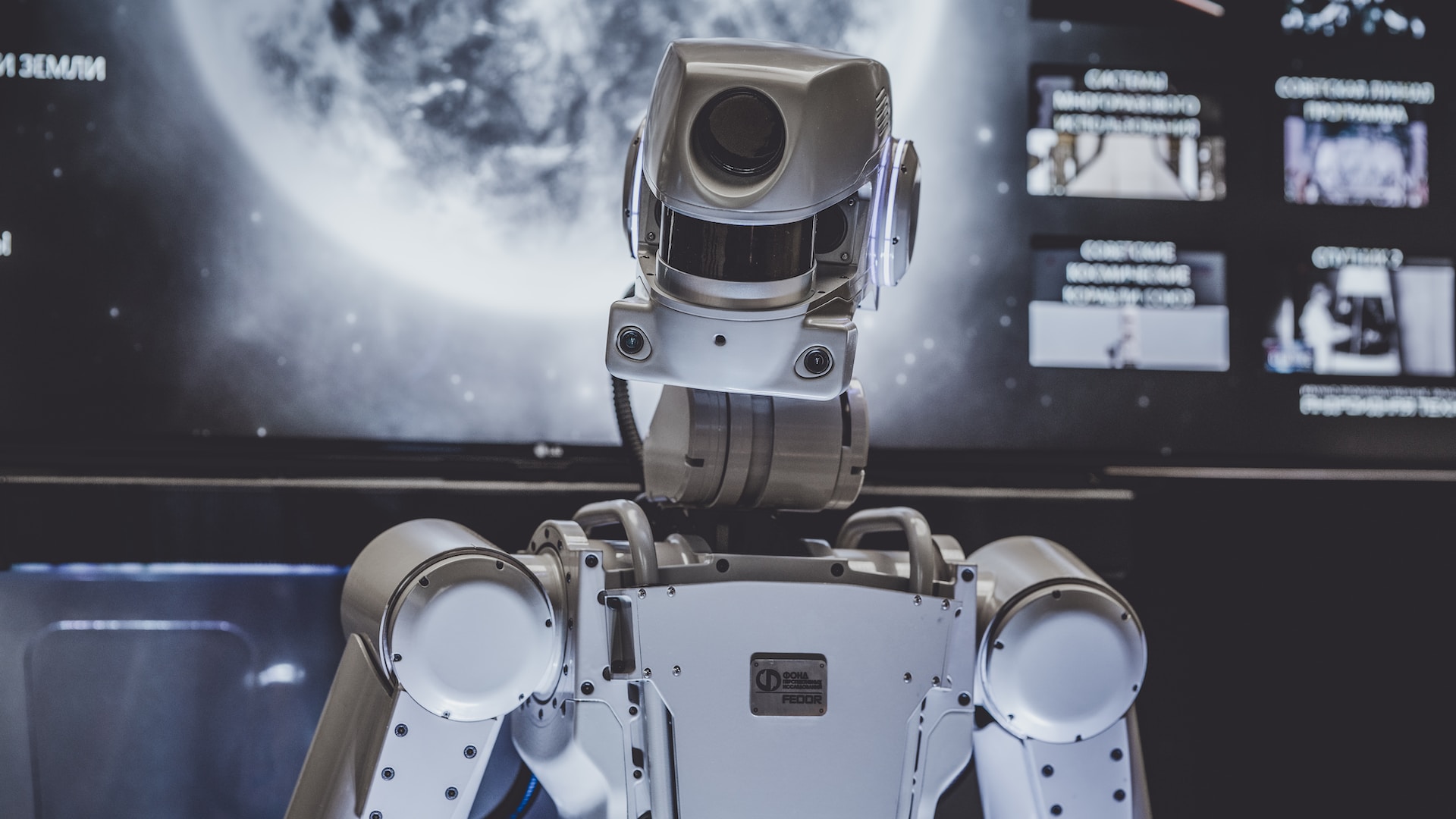Climate change is the most important issue of our time. It affects us all, and it’s up to us to take action now. To get started, here are five fundamentals you need to understand in order to make informed decisions about the environment and our planet’s future. Read on to find out what they are!
Introduction to Climate Change
Climate change is an urgent, complex and long-term challenge facing the world today. To help ensure that society can respond to the changing climate, it’s important to understand the basics: what it is, how it works and what its effects are.
Climate change refers to long-term changes in global climate patterns including temperatures, precipitation and weather events as well as changes in the behavior of living creatures. These changes are caused by natural processes as well as human activities such as burning fossil fuels for energy and deforestation for land use.
The current climate crisis is a result of too much greenhouse gas emission into our atmosphere. Greenhouse gases trap heat from the sun in our atmosphere, which causes global temperatures to rise. This increase in heat has caused more extreme weather patterns around the world including more intense rainstorms and severe droughts, rising sea levels and ocean acidification.
To reduce the severity of climate change, countries around the world must reduce their greenhouse gas emissions by transitioning away from energy sources that produce these gases, like coal or oil firing power plants. More sustainable sources of energy include solar power or wind turbines. Additionally, countries must seek to mitigate their emissions through improved technology or land-use alterations (e.g., reforestation).
Climate change has tremendous implications for biodiversity on all continents due to increased temperature variability; changes in rainfall patterns could lead extinctions or declines of multiple species if left unaddressed. This is why global leaders have committed within the United Nations Framework Convention on Climate Change (UNFCCC) that society needs to transition into net zero emissions by 2050 for a stable global temperature baseline Ð something called “the Paris Agreement,” signed by many countries worldwide in 2015 only recently finalized and ratified in November 2016. This agreement created a common platform where signatory countries agreed upon goals to reduce global CO2 emission levels over time along with how each country will provide funding towards developing projects related this cause across internationally mandated metrics monitored under UNFCCC regulations; however these goals donÕt come without their own argumentative sides due its lack of uniform commitment criteria amongst nations with unequal access energy resources available either naturally or financially with wide variances impacting economic or development disparities existing between them compelling different nations subscribe separate standards on part those already initiated under Paris Agreement framework according international climate treaty provisions obligated all signatories accede that serves list guidelines they must abide when crafting achieve desired outcome being worked towards goal establishing consistent environmental policy across Earth body relies everyone participating within it order function properly enforced fully succeed its potential
Causes of Climate Change
Climate change is a complex phenomenon that results from a number of causes stemming from human activities as well as natural processes. Increasing levels of greenhouse gases, deforestation and land degradation, overuse of resources, changes in the Earth’s albedo due to urbanization and other human modifications of the land surface, changing ocean circulation patterns related to thermal warming, melting glaciers and permafrost, sea level rise, changes in atmospheric water vapor and aerosol concentrations are some of the contributing factors that have led to the current climate crisis.
Greenhouse gas emissions from burning fossil fuels (coal, petroleum and natural gas) are responsible for approximately two-thirds of human-driven global warming since the industrial revolution. Burning these fuels emits large amounts of carbon dioxide (CO2), which traps heat in the atmosphere. Ground level ozone is also generated when fuel is burned this has serious direct health effects on people with respiratory illnesses or allergies as well as indirect effects on crop yields.
Another important contributor to climate change comes from deforestation or land degradation – this includes fires either started naturally or intentionally set by humans during agricultural processes such as clear cutting and slash-and-burn agriculture. Deforestation reduces carbon sinks which store CO2 Ð trees absorb CO2 while they are growing Ð effectively leading to an increase in atmospheric CO2 levels.
Changes in weather patterns due to global warming can disrupt water availability for both human consumption and agricultural uses leading to drought specifically if combined with overuse of resources such as groundwater or rivers due to population growth in drylands regions. Marine heat waves can also lead to coral bleaching or death if temperatures remain warm for long enough periods of time resulting in a disruption of ocean food chains with harmful consequences for humans who depend on seafood sources like fish and shellfish amongst others.
Finally, rising sea levels threaten coastal habitats such as estuaries where fresh water mixes with salty ocean water estuaries are often rich areas for biodiversity making them important ecosystems around the world but also more vulnerable due their proximity to coasts making them very susceptible being damaged by rising oceans caused by climate change resulting from a number dangerous factors listed above amongst others.
Impact of Climate Change
Climate change is the single greatest challenge facing our planet, and its impact is already being felt by communities everywhere. It is reshaping environments, economies, and even politics around the world. To understand what’s at stake and how to respond, it’s crucial to know five key facts about climate change:
1. Climate change is happening now: The average temperature of the Earth has risen by 1.1 degrees Celsius since preindustrial times, a major cause of global warming.
2. Its causes are human activities: Humans have drastically increased carbon dioxide levels in the atmosphere largely due to burning of fossil fuels for energy production, transportation, and other means of industrial activity.
3. Its effects are global and accelerating: The impacts of climate change are scattered equally across the world; warmer winters in Europe could mean harsher wildfires in California or more frequent flooding in high-risk areas like Bangladesh or India where sea levels will rise faster than any other continent due to their geographic location. As temperatures continue to rise and extreme weather grows more common, these effects will become even more acute and potentially catastrophic if left unchecked.
4. Resolving it requires sweeping changes: To reduce carbon dioxide levels significantly enough to slow down climate change requires dramatic reductions in emissions worldwide Ð including developing countries who may not be held responsible for majority of emissions but still suffer significant consequences from extreme weather events that can follow climate disruption patterns such as droughts or floods causing food shortages or conflict over resources becoming scarce..
5. We all have an obligation to act: Everyone shares a responsibility for tackling this issue Ð from governments making policy decisions on behalf of citizens , researchers working on solutions including clean energy sources like wind turbines or solar panels ,remineralization projects druing abandoned mine lands vulnerable ecosystems must be preserved y sharing knowledge about sustainable practices , individuals too have much power when it comes to shifting attitudes anti-consumption habits as well pledging resources towards environmental impact causes . Through collective action we can work together towards mitigating the worst effects before itÕs too late .
Solutions to Combat Climate Change
With over two-thirds of all greenhouse gas emissions coming from human activity, itÕs become increasingly clear that the only way to effectively reduce climate change is through large-scale action. To mitigate the damaging effects of climate change, we must focus on three main areas: reducing Greenhouse Gas (GHG) emissions, protecting natural “carbon sinks” (like forests and wetlands) and actively removing GHGs from the atmosphere.
Reducing GHG Emissions: The goal here is to reduce our societyÕs dependence on fossil fuels by adopting cleaner energy sources such as wind, solar and geothermal power. This could mean investing in renewable energy infrastructure or transitioning to electric vehicles powered by clean energy sources.
Protecting Natural Carbon Sinks: Forests, wetlands and grasslands act as carbon sinks meaning they absorb carbon dioxide from the atmosphere so it’s up to us to protect them. This can mean setting aside protected areas in forests which are managed sustainably, creating no-till farming systems that limit deforestation or planting new trees in existing landscapes.
Removing GHGs From The Atmosphere: Using technology such as direct air capture, we can remove GHGs directly from the atmosphere and store them underground or use them for other applications such as making building materials or fuel more sustainable. In addition to organic carbon sinks like trees and land plants, technological processes could be used to remove a large portion of existing CO2 emissions as well Ð leading some scientists to suggest that this area should receive greater attention if we are genuinely interested in slowing climate change.
Climate Change Mitigation Strategies
Climate change mitigation strategies refer to the broad range of human activities, technologies and policies that aim to reduce the causes of climate change or to adapt to its impacts. Mitigation efforts can be divided into two categories: reducing greenhouse gas emissions and increasing carbon sinks.
Reducing Greenhouse Gas Emissions – Strategies for reducing greenhouse gas (GHG) emissions include increasing energy efficiency in buildings and transportation systems; using renewable energy; decreasing reliance on fossil fuels; implementing clean combustion technologies for engines; controlling methane and other air pollutants from offshore oil and gas development; reducing fertilizer applications in agriculture; improving land use practices to prevent deforestation, as well as reforestation, afforestation, and improved forest management.
Increasing Carbon Sinks – Strategies for increasing carbon absorption include engaging in sustainable land management actions by conserving soil, vegetation cover, forest cover, wetlands, grasslands and croplands; expanding mangrove forests in coastal areas where possible; utilizing agricultural best-management practices such as no-till farming methods or cover cropping systems to reduce GHG emissions while maintaining agricultural productivity. In addition, climate smart agriculture techniques such as agroforestry (planting trees in agricultural lands), agroecology (utilization of ecological processes), biological fixation of nitrogen through legumes integrated with crops (and livestock systems) implemented together with conservation agriculture provide multiple climatic benefits including reduced GHGs. Finally, bio sequestration the capture of CO2 through photosynthesis can also play a role in mitigating atmospheric GHG levels.
Economic Impact of Climate Change
The economic impact of climate change is wide-ranging and affects individuals, businesses, and countries alike. For example, extreme weather events such as floods, hurricanes, and drought can cause devastating economic damage to communities. In addition to physical infrastructure damage, these weather events can disrupt supply chains and the global economy more broadly.
Climate change also poses serious long-term economic risks. Rising sea levels will force some coastal cities to address significant property losses and other costly infrastructure adaptation measures in order to maintain their viability as well as that of their citizens livelihoods. Increasing global temperatures will have implications for energy requirements and costs, as well as increased strain on already distressed water bodies and agricultural land.
For countries that export natural resources such as minerals or timber based on a particular climate regime or geographical location which is expected to drastically change in the future due to climate change, they may be at risk of dramatically reduced competitiveness in the global marketplace due to locational mismatch once those areas become less hospitable for those extractive activities.
Finally, even if emissions are constrained in line with the Paris Agreement’s goals over time, this process will still be accompanied by near-term economic costs associated with transitioning away from fossil fuels toward clean renewable energy sources including upfront investments required for new energy systems as well investment losses due to stranded fossil fuel assets around the world (e.g., coal-powered plants). These costs must be taken into consideration when discussing long-term strategies regarding how we best tackle this urgent global challenge
Climate Change in the News
In today’s digital world, it’s easy to get lost in the constant cycle of news and headlines. We now see stories about climate change everywhere, from social media to television, but how much do we really know? Here are five important things that everyone should know when it comes to climate change:
1. We are in a climate emergency Ð Without immediate action, global temperatures could increase by more than 7¡C by 2100. This could have devastating impacts on people’s health, livelihoods and the environment worldwide. It’s important to stay informed so that appropriate solutions can be sought and effectively implemented.
2. Climate change is real and it is happening now Scientific evidence supports the fact that climate change is real and caused by human activities such as burning fossil fuels and deforestation. These activities have significantly increased levels of CO2 in the atmosphere which has led to an increase in global temperature over time.
3. We can prevent more severe changes Ð Governments across the world are taking steps to reduce their impact on climate change through measures such as investing in renewable energy technologies or implementing new laws that require businesses to adhere to higher environmental standards for their products or services. As consumers, it’s our responsibility to support these efforts by making conscious choices when purchasing goods and services or investing our money
4. We need to act fast Ð Extreme weather events such as floods, heatwaves and droughts occur more frequently due to changes in the climate which puts additional strain on natural resources such as food or water supplies globally or regionally. To prevent further damage we need take drastic action now before it is too late!
5 Climate Change is Inevitable – No matter how hard we may try (and we should!), some of the effects of Human-induced Climate Change are unavoidable at this point due a certain degree of inertia in earth systems like ocean warming/cooling timescales & movement lag times etc). So there will likely be consequences from current human CO2 emissions even with heroic efforts towards mitigation & adaptation measures taken today that said taking mitigating actions today greatly reduces those future consequences…so all hope isn’t lost!
Conclusion
It’s essential to remember climate change is an ongoing process and awareness is growing faster than ever before. Now more than ever, the public needs to educate themselves on the facts, understand their responsibilities, and consider how they can help mitigate the risks posed by climate change. As concerned citizens of this world, it’s critical that we all make proactive and informed decisions to combat this global issue so that future generations will be able to benefit from a healthier planet.






